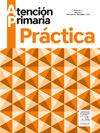全瘫:索马里病例报告
Q4 Medicine
引用次数: 0
摘要
导言:全瘫(SIT)是一种罕见的先天性疾病,包括心脏位置完全反转和内脏器官镜像排列。早期诊断对于处理大血管转位和卡塔格纳综合征等并发症至关重要,卡塔格纳综合征主要表现为支气管扩张和因睫状肌功能障碍导致的鼻窦炎。病例介绍 一位 52 岁的男性糖尿病患者因大量水样腹泻、呕吐、头晕和心悸而就诊。他每天使用 70 单位的胰岛素控制糖尿病,并有慢性阻塞性肺病病史。体格检查显示低血压、心动过速和右侧心尖搏动。胸部 X 光片、超声波和心电图等检查证实,患者为急性胃肠炎继发的右心室扩张伴坐位性心律失常和低血容量性休克。讨论SIT是一种由基因决定的异常,发病率从1:35 000到1:1400不等,平均为1:10 000,男性发病率较高。许多患者没有症状,往往是偶然发现的。诊断成像技术,包括胸片、CT 扫描、核磁共振成像和超声波检查,是确诊 SIT 的关键。右轴偏离和反向 QRS 波群等心电图检查结果对诊断右心室突出症很有价值。患者教育对于提高 SIT 患者的医疗保健水平、预防并发症和减少焦虑至关重要。准确诊断有赖于全面的影像学检查和临床评估。患者教育对于知情护理和减轻焦虑至关重要。病例回顾强调了医疗服务提供者在出现无关症状时仍能有效诊断 SIT 的重要性。本文章由计算机程序翻译,如有差异,请以英文原文为准。
Situs inversus totalis: A case report from Somalia
Introduction
Situs inversus totalis (SIT), a rare congenital disorder, involves complete reversal of the heart's position and mirrored arrangement of visceral organs. Early diagnosis is crucial for managing complications like transposition of the great vessels and Kartagener syndrome, marked by bronchiectasis and sinusitis due to ciliary dysfunction.
Case presentation
A 52-year-old male with diabetes mellitus presented with large amounts of watery diarrhea, vomiting, dizziness, and palpitations. He managed his diabetes with 70 units of insulin daily and had a history of chronic obstructive pulmonary disease. Physical examination revealed hypotension, tachycardia, and a right-sided apex beat. Investigations, including chest X-ray, ultrasound, and ECG, confirmed dextrocardia with situs inversus and hypovolemic shock secondary to acute gastroenteritis. The patient responded well to treatment and was discharged on the second day, continuing diabetic management.
Discussion
SIT is a genetically determined anomaly with an incidence ranging from 1:35 000 to 1:1400, averaging 1:10 000, with a higher prevalence in males. Many patients are asymptomatic, with the condition often detected incidentally. Diagnostic imaging techniques, including chest radiography, CT scans, MRI, and ultrasonography, are crucial in confirming SIT. ECG findings, such as right-axis deviation and reversed QRS complexes, are valuable in diagnosing dextrocardia. Patient education is essential to empower individuals with SIT to navigate their healthcare, prevent complications, and reduce anxiety.
Conclusion
SIT poses diagnostic challenges due to its incidental discovery. Accurate diagnosis relies on thorough imaging and clinical evaluation. Patient education is vital for informed care and anxiety reduction. Case reviews underscore the importance of healthcare providers' readiness to diagnose SIT effectively despite unrelated symptoms.
求助全文
通过发布文献求助,成功后即可免费获取论文全文。
去求助
来源期刊

Atencion Primaria Practica
Medicine-Family Practice
CiteScore
0.30
自引率
0.00%
发文量
40
审稿时长
24 days
 求助内容:
求助内容: 应助结果提醒方式:
应助结果提醒方式:


